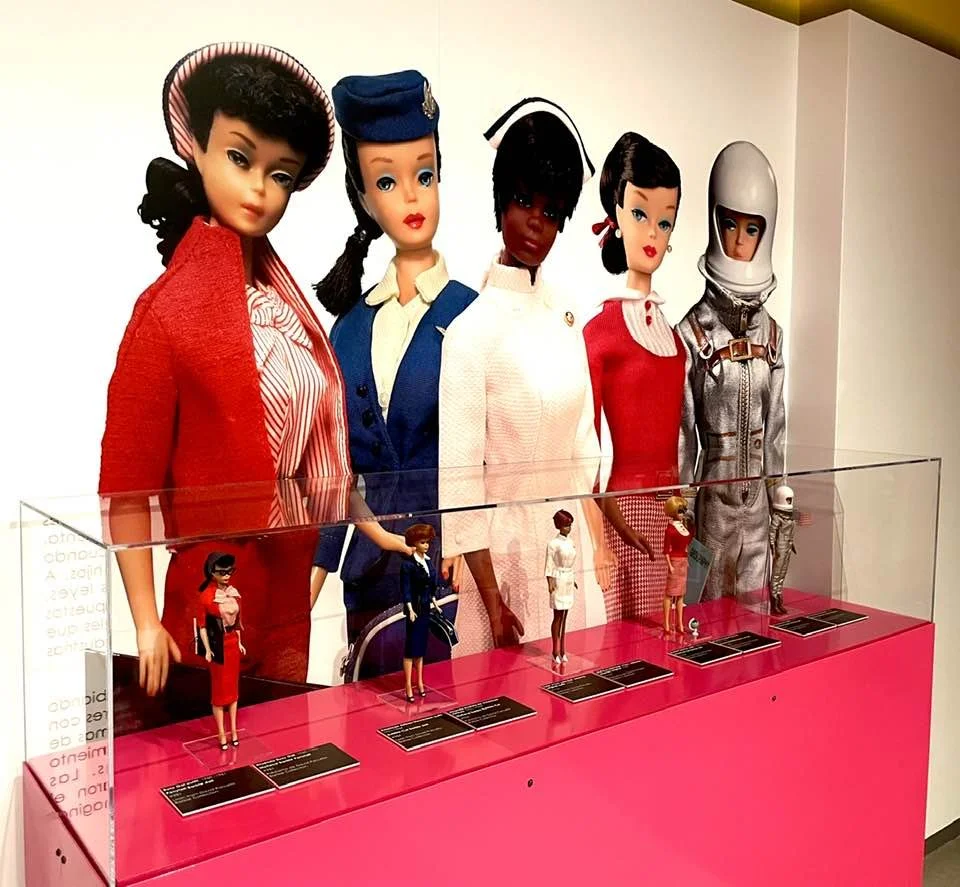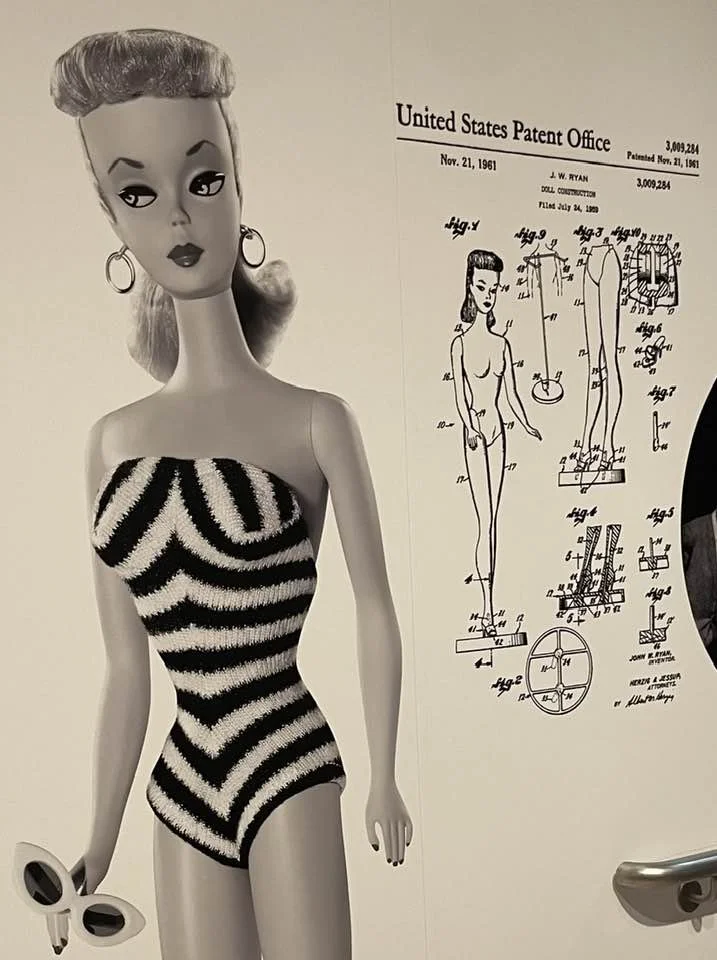Exhibition review of Barbie A Cultural Icon
Barbie Dolls currently on display at Phoenix Art Museum
Some of my earliest and fondest memories involve playing with Barbie dolls for hours. I still remember receiving my first Barbie, which coincidentally was called “My First Barbie”. As an adult my love of Barbie has endured. Can you imagine my excitement when I found out the Phoenix Art Museum would be having a full exhibition dedicated to Barbie opening on my birthday month?
Barbie A Cultural Icon showcases the Barbie brand’s more than sixty year history and impact on pop culture. On display are more than 250 dolls including the original released in 1959 and a selection covering a range of ethnicities, body types, and careers, sections on the Space Age, the Barbie Dreamhouse, iconic fashions including Groovy Style, beachwear, disco and the twenty-two original ensemble outfits.
Ruth Handler, co-founder of Mattel, was inspired by her daughter Barbara’s limited toy choices to create a doll with adult features that could show girls they could be anything. Although her team faced many challenges trying to capture her vision on such a small scale, it was after traveling to Europe and seeing a doll much like the one she wanted to create that her vision started to become a reality. In 1959 Barbie debuted at the New York Toy Fair and has been enriching little girl’s play since.
Barbie A Cultural Icon is curated by leading expert in the field of costume history, preservation, and exhibition: Karan Feder. Some of her consultation work includes the Liberace Foundation and Museum, The Mob Museum, David Copperfield’s International Museum and Library of the Conjuring Arts, and the Nevada State Museum’s collection of Las Vegas cabaret costumes. Karan Feder is also a published author and a frequent lecturer on the subject of fashion history and popular culture.
In short, this exhibition does not disappoint! Make sure you take a selfie in the life-size Barbie Mirror-Pink Corvette and grab some exhibit merch from the museum gift shop to make your visit complete. Barbie A Cultural Icon is on display now at the Phoenix Art Museum until July 7, 2024.
Original 1959 Barbie
Original 22 ensemble outfits designed by Charlotte Johnson (1959)




